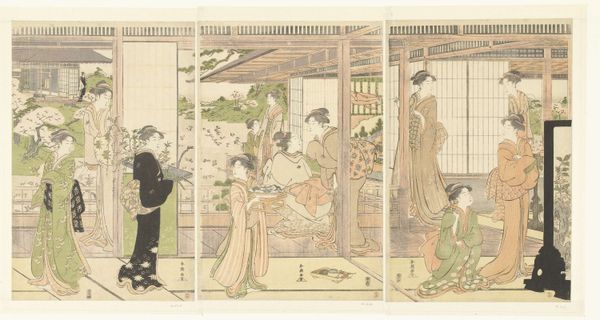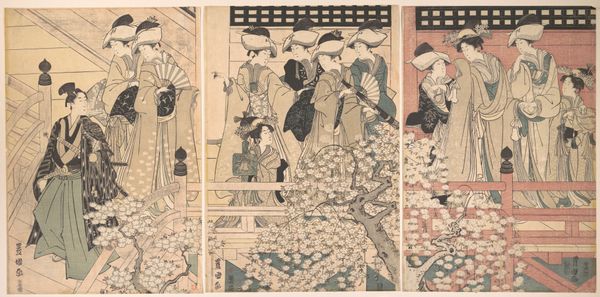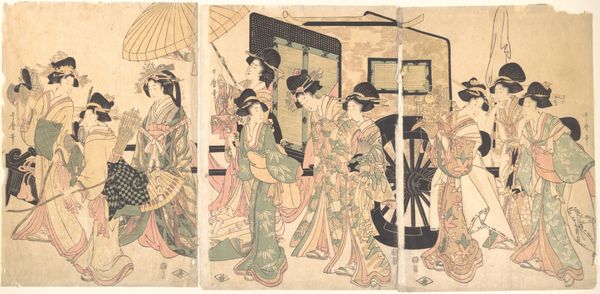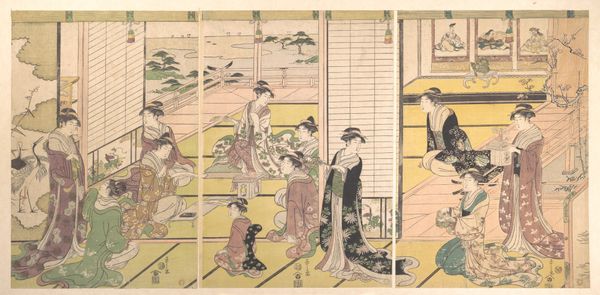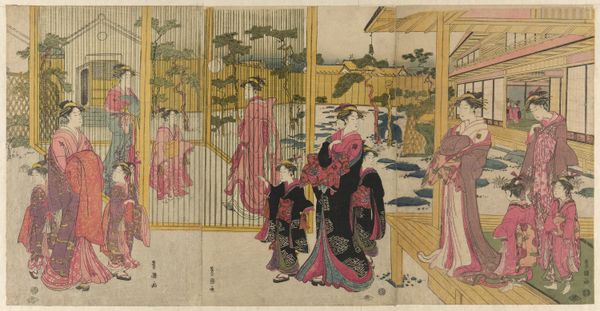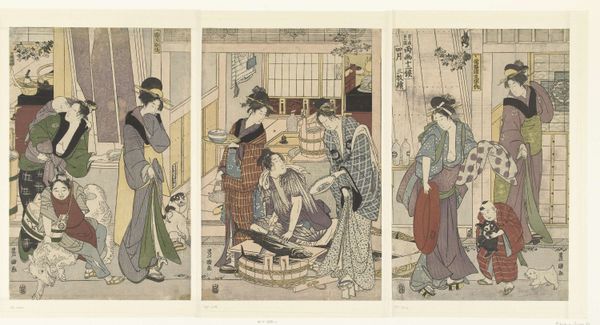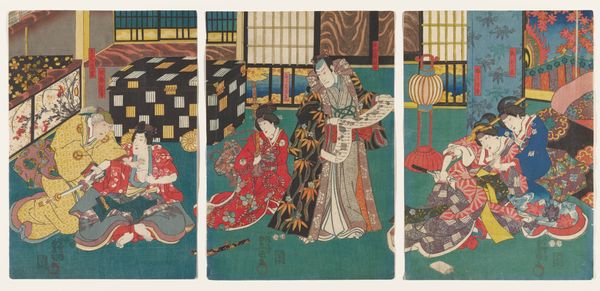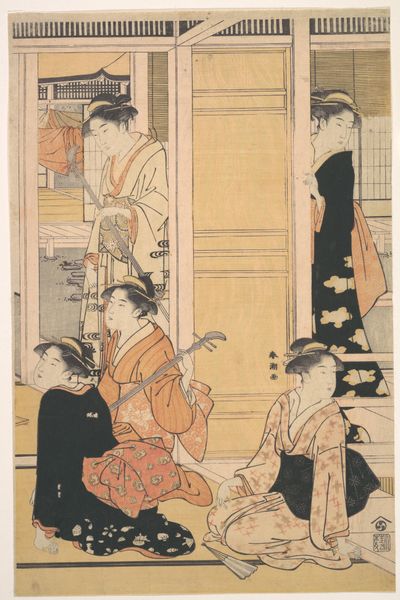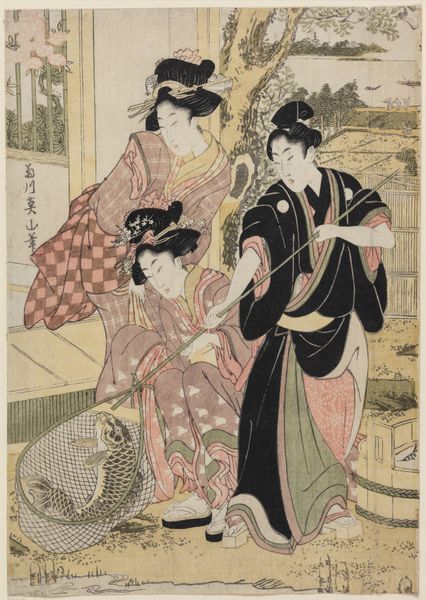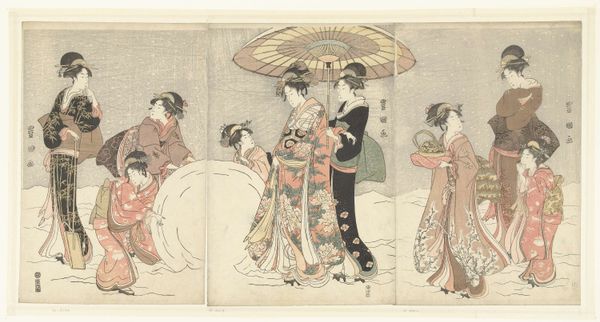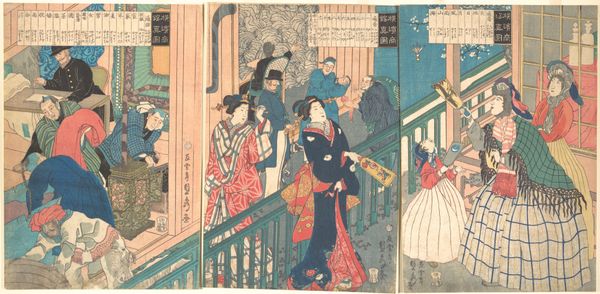
#
portrait
# print
#
asian-art
#
ukiyo-e
#
figuration
#
genre-painting
Dimensions: height 346 mm, width 249 mm, height 346 mm, width 251 mm, height 347 mm, width 258 mm
Copyright: Rijks Museum: Open Domain
Curator: This triptych is titled "The Visit" and dates from around 1788-1792, made by Hosoda Eishi. What are your initial thoughts? Editor: I'm struck by the composition; the way it reads left to right feels like a visual narrative. The artist clearly puts work and labor at the forefront by representing an encounter through print. It’s subtle, but compelling. Curator: Absolutely. The division of space creates a narrative arc. It suggests a complex system of social performance in the Yoshiwara district of Edo, Japan, particularly around gender and status. Each panel teases out a piece of it, from transport to reception. Editor: Precisely. And considering the Ukiyo-e tradition's focus on the floating world and the commercialization of art through prints, it brings up questions about accessibility and viewership. Who were these images for, and what labor went into their making? The woodblock print itself demands skillful carving, inking, and pressing, aspects often overlooked. Curator: Indeed, and if we view the Yoshiwara as a heterotopic space outside of mainstream society, then these visits themselves became part of the social fabric. How did women of the Yoshiwara navigate agency within those constraints? Editor: Interesting, especially given that women from these spaces would become part of a labor system, even under complicated arrangements that held an imperial structure. If you also think about the silk kimonos and luxurious settings, how does the material contrast against a medium such as this triptych? It certainly makes you think. Curator: And look how carefully each figure's clothing, gesture, and gaze are rendered. Their identities—performer and patron, giver and receiver—are meticulously staged within this space of consumption. How are social power dynamics replicated? Editor: You've offered crucial insight. It seems to come full circle when we start to consider both the means and the message itself, which creates new discussions and viewpoints around the construction of gender. Curator: A necessary reflection. This art continues to challenge us to engage critically with our past and to interrogate the systems that continue to impact our present. Editor: Indeed, from labor conditions and its process of creation, it serves as a lens through which we see production and gender dynamics.
Comments
No comments
Be the first to comment and join the conversation on the ultimate creative platform.
